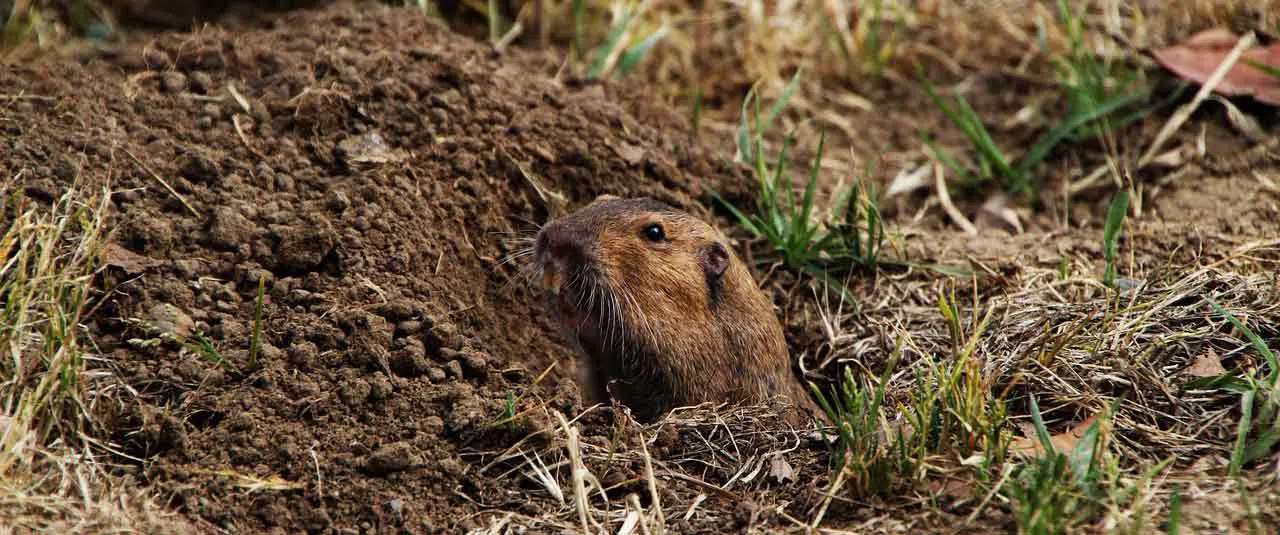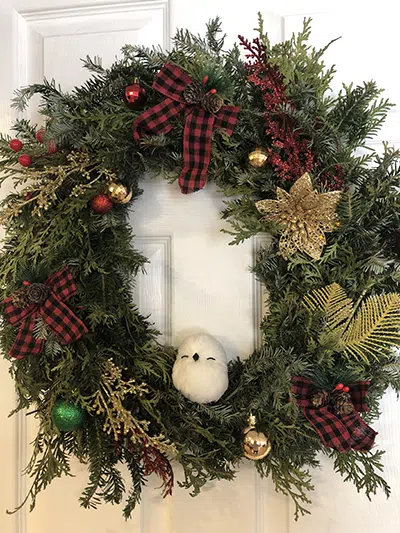Gophers can be found all over North and Central America. Often confused with the groundhog (or woodchuck), the gopher is a small mammal, usually measuring between 4 and 14 inches in length and weighing 2lbs or less. You can quickly identify a gopher by its skinny, and sometimes hairless tail. It belongs to the Geomyidae family; it is a burrying rodent. The gopher prefers to make its home in loose and sandy soil, allowing for burrying and digging tunnels. Since it spends most of its time underground, you aren't likely to actually catch a glimpse of the animal itself... but you'll certainly notice its presence!

What Do Gopher Holes Look Like?
You may be wondering if what you are looking at is a mole hill or the remnants of a gopher hole. Aside from being considerably larger, there are some distinguishing features that determine what a gopher hole in your yard looks like:
- Dirt pile: Gophers usually leave behind a mound of excess dirt after building their tunnel
- Covered openings: Gophers close the openings of their burrows
- Crescent shaped mound of dirt: The pile of dirt left behind is a crescent-shaped mound
- A dip in the mound: The mound typically shows a slight dip in the middle
Signs of Gopher Activity in Your Yard
Some of the more obvious signs of gopher holes in your yard may be torn up grass, damanged sprinkler lines, and uprooted plants. Some less obvious damages may include chewed underground electrical wiring. Let's look at these issues in more detail.
Gopher Mounds
You may not see the actual hole and connected tunnels, but you will see a distinct 12-20 inch in diameter crescent shaped mound of dirt - courtesy of your backyard gopher. The mound may be up to 3 inches high.
Tunnel Openings
If you actually spot a tunnel opening, your resident gopher is still in the middle of a busy work day. He will close that hole and leave behind a mound of dirt, once his day's work is done. Gophers generrally have 2 short sleep cycles per day and are most active between the hours of 4pm to 8pm and again between midnight and 4am.
Wilting Plants
Tunnel building doesn't come without fall outs. Dug or chewed roots or even whole uprooted plants tend to make for wilting greenery. If the roots look salvageable, you can replant or try to soak the plant in water for 24 hours to rehydrate and then replant.
Visible Runways
You won't see the actual tunnels unless you remove the top soil. What you will see is the exit hole with the previously described mound of dirt. Gophers will not leave a hole open, as predators such as fox will follow their scent and dig up the hole/tunnel. You may occasionally see an open feeder hole, not straight down, but at a 40 degree or so angle. However, it is more than likely that this hole has been closed off further into the tunnel.
Chewed Plants
Gophers are herbivores, consuming plants, flowers, plant matter, and occasionally vegetables as well. They favour Forbs, a family of wild plants that have broad leaves and herbaceous stalks. You may have some forbs in your garden: sunflowers, spiny asters, or goldenrod.
Damage to Irrigation Systems
If you have below ground sprinkler or irrigation systems, you'll likely not be happy with gophers in your yard. In the pursuit of building the perfect tunnel and with their sharp teeth (especially those 4 incisors) and equally sharp claws, they can shred your irrigation system in no time at all.
Gopher Hole Risks
Landscaping Damage
Torn lawns, uprooted plants, and unsightly mounds of dirt, don't do much for curb appeal. The gopher hole mounds also make cutting the grass somewhat awkward and difficult.
Structural Integrity of Your Home
Gophers can tunnel under your home, seriously weakening the integrity of your foundation. One gopher burrow can have around 200 yards of tunnels, distributed over an area from two hundred to two thousand square feet. The nesting areas can be anywhere from 6 inches to 6 feet underground.
Potential Spread of Diseases
While physical encounters with gophers are rare at best, there is always the potential for transmission of commen rodent diseases, such as:
- LCM
- hantavirus
- leptospirosis
- plague.
Those diseases are spread through the exchange of fluids, such as a bite. If you experience fever, headaches, chills, muscle pains, or vomiting after being bitten by a gopher, a trip to Urgent Care or the nearest Clinic is in order.
Get More Animal Control Help from Hawkeye!
If you've identified gopher holes in your yard and would like to evict your unwanted guests, give us a call. All of our trained technicians are licensed trappers and can help you reclaim your backyard!














